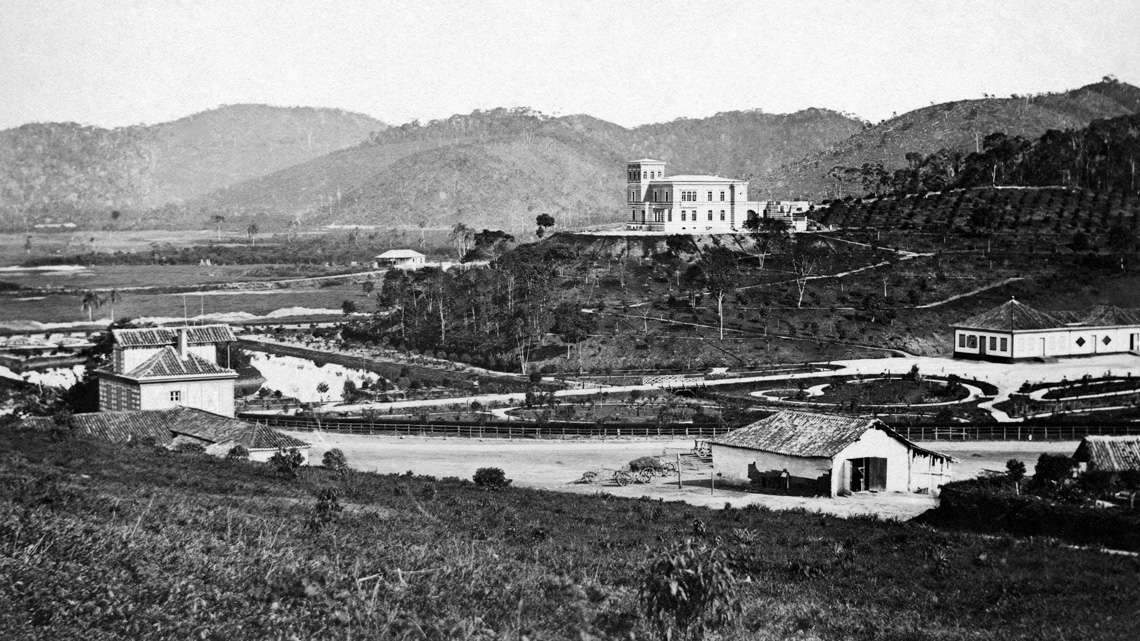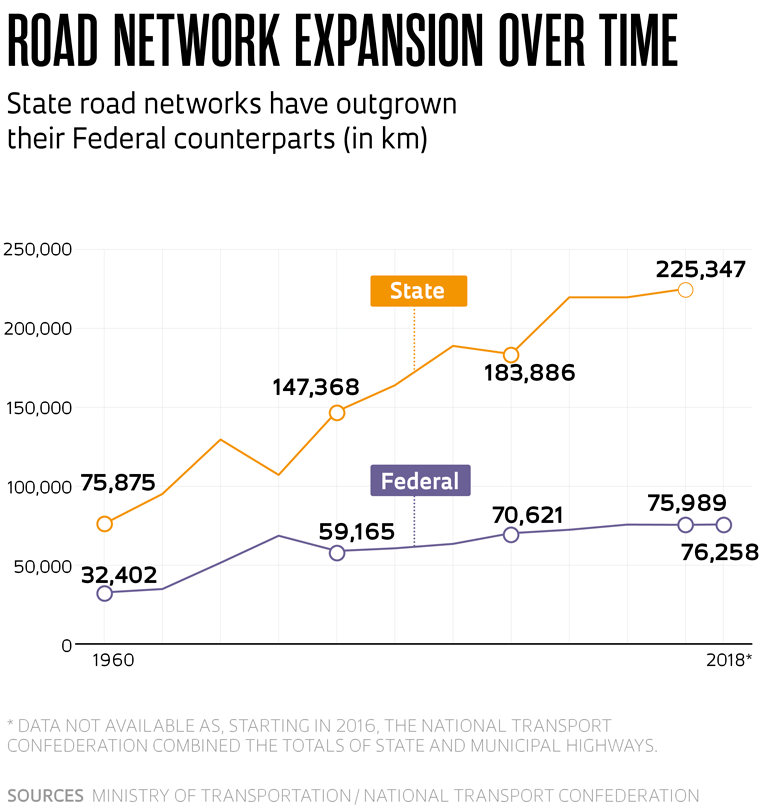Unpaved, narrow, steeply sloped, and treacherously winding, the early nineteenth-century roads connecting Brazil’s hinterland to its coastal cities were rudimentary even when judged by the standards of the time. Ox-drawn carts struggled to traverse these precarious routes. This resulted in high freight costs and necessitated the transportation of goods using pack animals like donkeys and mules. Foodstuffs often spoiled before reaching their destinations.
This began to change when hinterland coffee farmers in São Paulo and Rio de Janeiro, where Brazil’s largest export at the time was rapidly gaining prominence, started pressing the government for better roads to transport their commodities to the ports of Santos and Rio de Janeiro. By the mid-nineteenth century, this pressure led to the construction of roadways modeled after the well-established English road-building practices that had been in use since the late eighteenth century.
According to Liedi Legi Bernucci, a professor of civil engineering at the Polytechnic School at the University of São Paulo (POLI–USP) and president of the São Paulo State Institute for Technological Research (IPT), the Industrial Revolution, which began in the United Kingdom in the latter half of the nineteenth century, spurred the need for swift and cost-effective transportation of goods. During this period, Scottish engineer John McAdam (1756–1836) devised a method of constructing roads with a smooth and durable surface that proved extremely timely and saw widespread adoption.
“McAdam realized that road thickness could be drastically reduced by layering it with progressively smaller stones,” Bernucci explains. The foundation consisted of stones measuring between 5 centimeters (cm) and 7.5 cm in diameter, overlaid with incrementally smaller stones measuring 2 cm or less in diameter. “To minimize pavement wear, the smaller stones were placed atop the larger ones and in the gaps between them.”
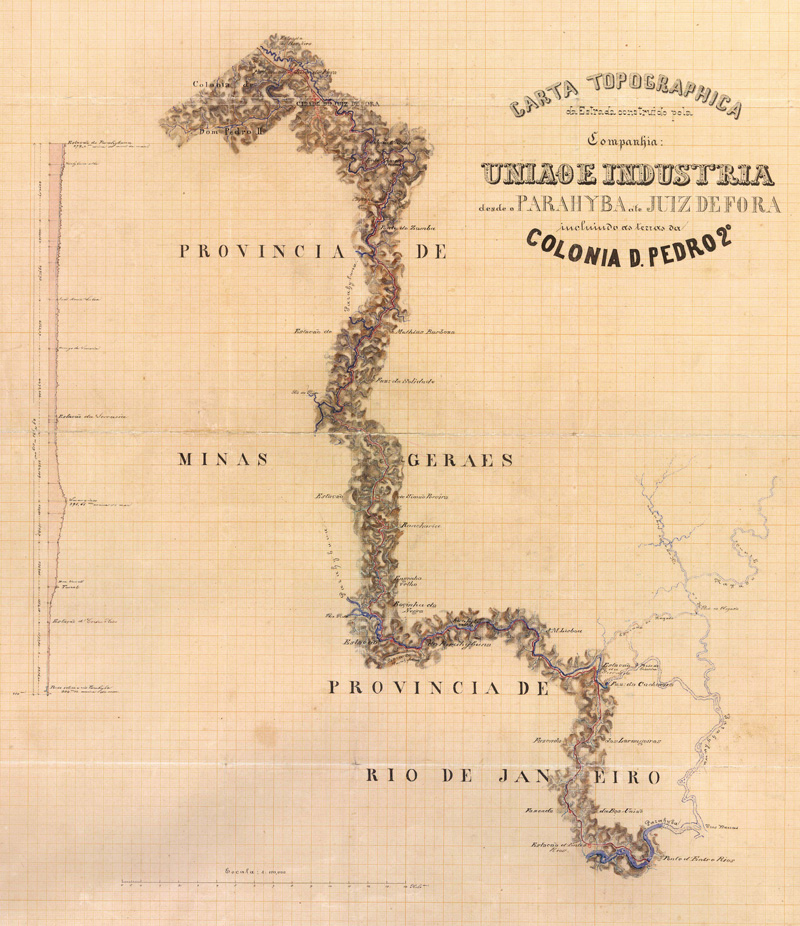
Brazilian National LibraryA topographic map from 1861, drawn by Franz Keller, of a road built by Companhia União e Indústria from the Paraiba Valley to the south of Minas Gerais (scale 1:100,000)Brazilian National Library
In the nineteenth century, the term “macadam roads” became synonymous with varying construction methods that shared a common principle: using stones of various sizes to build roads at lower costs compared to traditional methods dating back to ancient Rome. According to Bernucci, macadam roads typically had a pavement thickness of about 25 cm, a stark contrast to the 1-meter thickness of Roman roads. These methods were used in the Brazilian imperial government’s early efforts to construct wider, paved roads before 1850.
One of Brazil’s earliest and, at the time, most important macadam roads, the União e Indústria highway, completed in 1861, connected Petrópolis, in Rio de Janeiro State, to Juiz de Fora, Minas Gerais. Spanning 144 kilometers (km) in length and 8 meters (m) in average width, the road enabled carriages to reach a then-remarkable speed of 20 kilometers per hour (km/h) in both directions, completing the journey in just 12 hours. This new highway catered to the interests of coffee growers who owned stock in Companhia União e Indústria, which built the road in the space of just five years.
However, preceding the União e Indústria highway were two other lesser-known macadam roads. In 1850, responding to pressure from coffee farmers for improved roads to transport their produce, the government of Rio de Janeiro funded the construction of a 22 km macadam road connecting Mangaratiba — then the primary port for coffee grown in the Paraíba Valley and southern Minas Gerais — to the mountainous village of São João do Príncipe, now the municipality of São João Marcos. Construction began in 1855 and lasted two years. Opened in May 1857, Mangaratiba Road replaced the precarious pass over which mule trains used to traverse the Piloto Mountains, near the coast of Rio de Janeiro, to transport coffee to the port town midway between Rio de Janeiro and Paraty.
“Mangaratiba, in fact, lays claim to being Brazil’s inaugural roadway,” says Soraya Almeida, a geologist at the Federal Rural University of Rio de Janeiro (UFRRJ). Alongside fellow geologist Simone Oliveira, she surveyed the few remaining stretches of original pavement that have not since been surfaced with asphalt and integrated into the Luiz Ascendino Dantas highway, or RJ-149, connecting Mangaratiba to Rio de Janeiro’s hinterland town of Rio Claro. The pair of researchers also explored what remains of the historic mountainous section known as Estrada do Atalho, which could not be incorporated into the modern roadway.
They corroborated the account provided by English engineer Edward Webb (1820–1879), who served as technical project manager from 1855 to 1858. In a letter addressed to Emperor Dom Pedro II (1825–1891), Webb disclosed that the construction method employed was not McAdam’s but rather that of another Scottish engineer, Thomas Telford (1757–1834). In this modified method, the road comprised three layers: a base layer of larger stones ranging from 15 cm to 30 cm in diameter, a second layer of smaller stones, and a crowning layer of 2 cm gravel. This technique was better suited to the region’s wet climate, but once complete was indistinguishable from a macadam road. Webb also devised a way to make the road surface more weather-resistant by applying “a layer of compacted clay and using a cast iron roller to ensure a smooth surface,” wrote the geologists in a November 2022 paper in the journal Anais do Museu Paulista: História e Cultura Material.
Engineers regarded Mangaratiba Road as the finest in Brazil at the time, reducing travel time eight-fold compared to its rugged and primitive predecessor. Its role as a conduit for coffee exports, however, was short-lived. “Farmers welcomed the high-quality road but complained about the tolls charged by the company that built and managed the road,” says Almeida.
In 1860, a political dispute led to the bankruptcy of Cia. Estrada de Mangaratiba, whose financial accounts were rejected by government authorities; a subsequent audit challenged the government’s analysis, showing that freight costs had decreased rather than increased, as the farmers had claimed. In any case, in the 1860s, the construction of railways for transporting coffee to the port in Rio de Janeiro significantly reduced traffic, leading to the gradual abandonment of the road.
Another road from that period met a similar fate. In August 1857, a newly opened road connected Santa Clara (now Nanuque) to Filadélfia (now Teófilo Otoni), in the Mucuri River Valley area in Minas Gerais. The imperial government, looking to stimulate development in northeastern Minas Gerais by opening trade routes to Rio de Janeiro’s sea ports, funded the construction of the road by Companhia de Navegação e Comércio do Mucuri, a company established in 1847 by entrepreneur Teófilo Benedito Ottoni (1807–1869). The road ran 170 km in length and was punctuated by 54 wooden bridges.
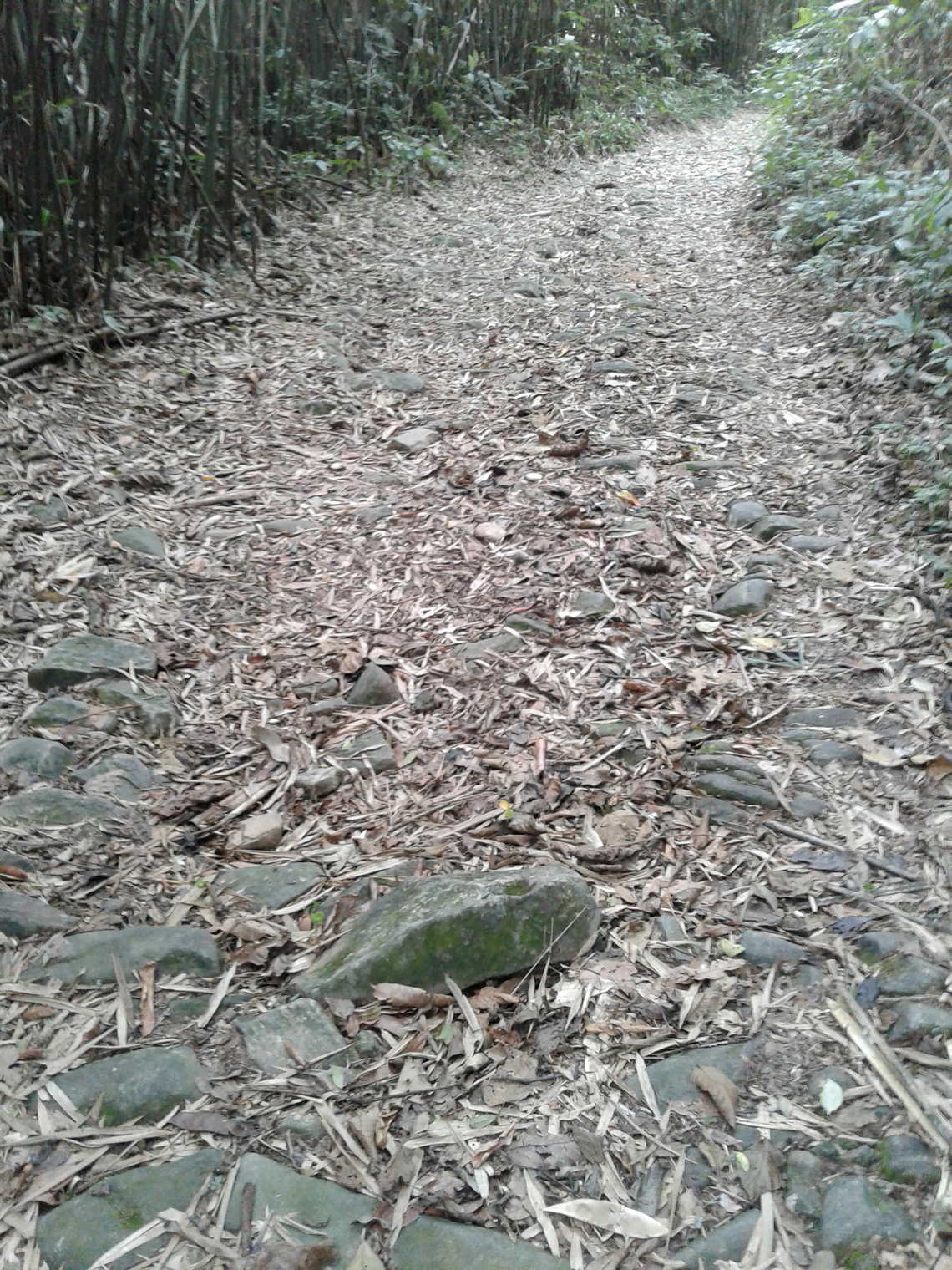
Soraya Almeida / UFRRJRemnants of the original paving stones on Mangaratiba RoadSoraya Almeida / UFRRJ
In 1859, “over 40 private mule-drawn carriages, 200 ox carts, and 400 teams of donkeys traversed this road,” wrote historian Creso Coimbra in a study published by the Ministry of Transportation in 1974. The throughput of goods fell short of expectations, however, leading the government to take over Ottoni’s company in 1861. Lacking traffic to warrant upkeep, the road quickly fell into decay.
“Precarious as they were, Brazil’s colonial roads played an important role in demarcating boundaries and curbing the illicit trade of metals and precious gems,” says Télio Anísio Cravo, a historian currently in a postdoctoral program at the Institute of Political Studies (SciencesPo) in Paris. “Later, during the Empire, their role was expanded to include national integration, tax collection, and regulating the production and flow of goods.”
Despite their importance for economic development, by the close of the nineteenth century, Brazil had only approximately 400 kilometers of macadam roads. By the 1930s, the nation’s road network had made only modest progress, boasting less than a thousand kilometers of total road length, including 805 kilometers of macadam roads and 104 kilometers of concrete and asphalt roads. In the 1950s, as asphalt came into wider use, Brazil still lagged behind with only 1,300 kilometers of paved highways, while its southern neighbor, Argentina, had an impressive 10,000 kilometers.
It was not until 1956, during Juscelino Kubitschek’s (1902–1976) administration, that Brazil began building roads at a large scale. Kubitschek’s vision centered on investing in road transportation as a means to attract the automotive industry to the country. This strategy succeeded in its goal, albeit at the expense of maintaining the railway network. “It was a fundamentally flawed choice, as different transportation modes should be seen as complementary, not in competition,” evaluates Bernucci.
The 1960s and 1970s, during the military administrations, witnessed another surge in highway construction, often funded from abroad. However, as the rapid growth era of the 1970s — known as the “economic miracle” — concluded, investment dwindled, and road maintenance once again suffered neglect. In the United States, long-term road-maintenance planning was standard practice, given their experience with how roads age over time, “a practice we only adopted 50 years after the expansion led by Kubitschek,” says Bernucci.
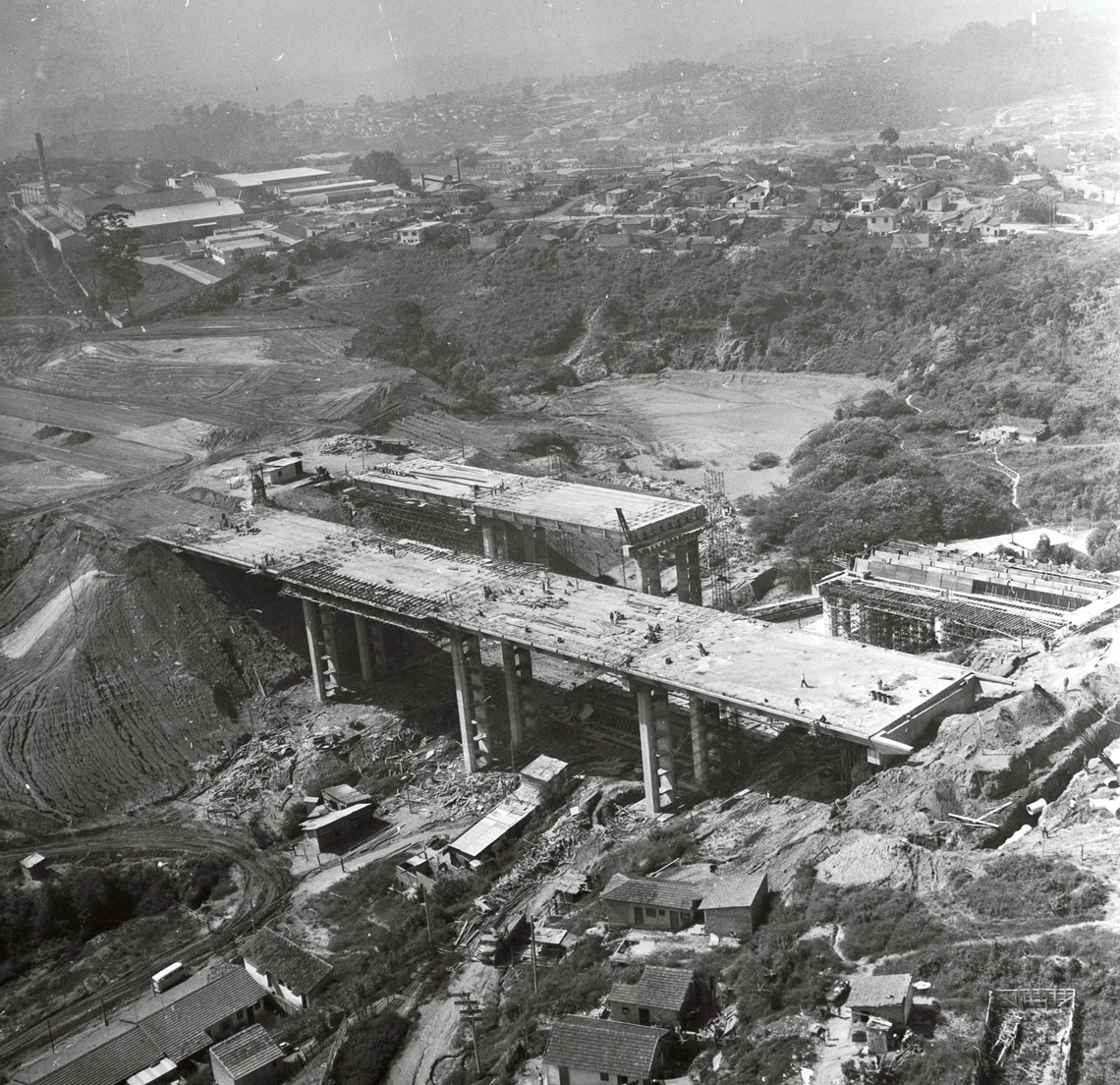
São Paulo State Public Archives The Imigrantes Highway under construction in the 1970s to ease traffic from São Paulo to the coastSão Paulo State Public Archives
American and European highways are typically built to last for 20 to 30 years (in some instances, even 40 years in the United States) before requiring overhauls. In contrast, Brazilian highways are originally designed with a mere decade in mind. While this approach helps cut down initial construction costs, it escalates long-term maintenance expenses and has an adverse social impact, as poorly kept roads can lead to accidents and loss of life.
Today, Brazil is at the forefront of road construction technology. A case in point is the Imigrantes Highway (SP-160), which snakes through the hills of Serra do Mar between São Paulo City and coastal towns along the coast. Opened in 1976, its primary purpose was to ease congestion on the narrow and treacherous Anchieta Highway. This project was highly ambitious for its time, with a section of highway consisting almost entirely of bridges (44) and tunnels (11 in one roadway and 14 in the other).
Spanning 58.5 kilometers, the northern leg of Imigrantes is notable for its advanced engineering and complexity, according to Bernucci. “In many stretches, the challenging terrain required engineers to design bridges to withstand ground movement,” explains the researcher. The southern leg was opened in 2002, featuring a quartet of tunnels — two of which boast the distinction of being the longest in Brazil, at 3,146 meters and 3,009 meters long, respectively. The sprawling bridges and extensive tunnels were a way to minimize the environmental footprint in the mountainous terrain.
However, despite Brazil’s technological prowess, the pace of road construction and expansion falls short of the rate of growth of its vehicle fleet, according to assessments by the National Confederation of Transportation (CNT). Meanwhile, the National Confederation of Industry (CNI) warns that the dearth of investments in transportation infrastructure creates a chokepoint for economic growth, drives up freight costs, and makes Brazilian products less competitive on the global stage.
Republish
